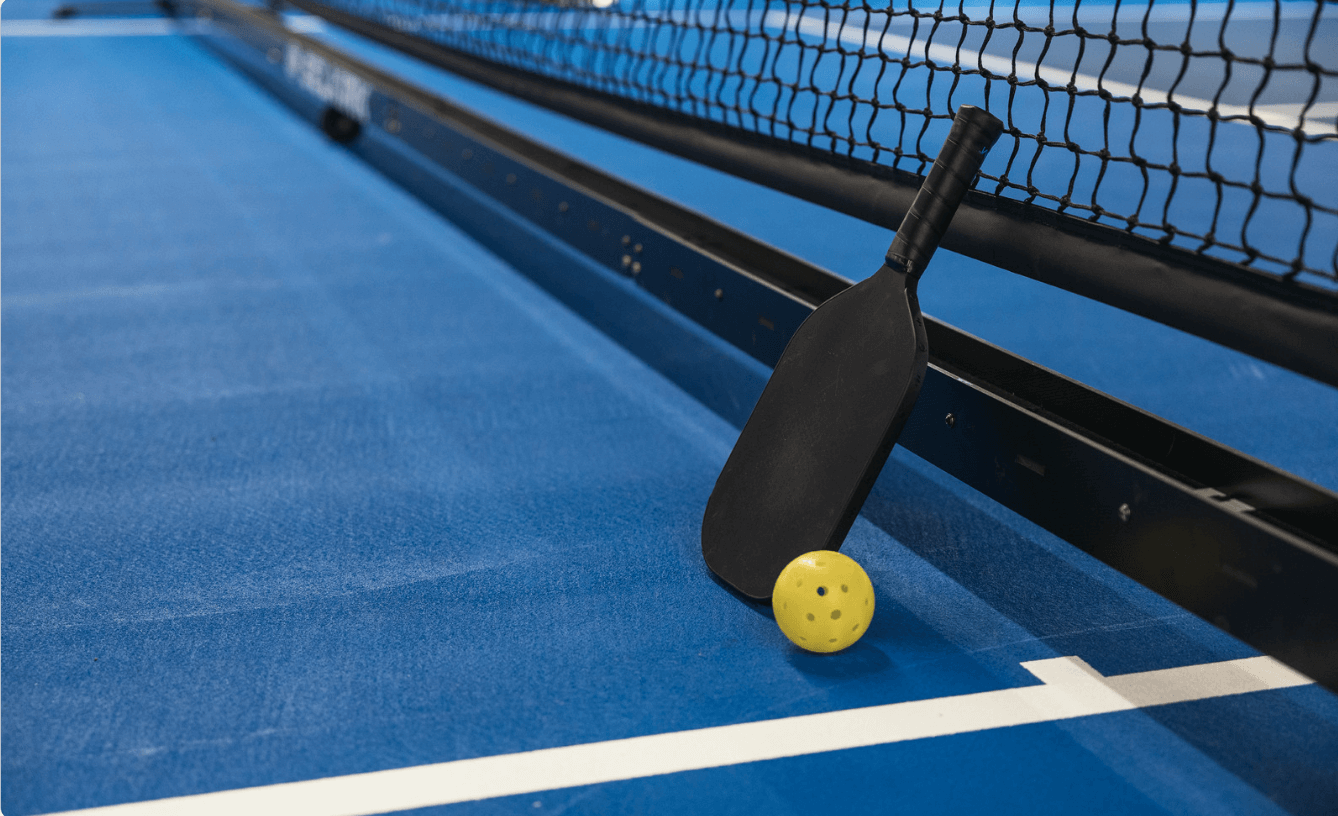Pickleball Elbow: Symptoms, Causes and Treatment

Pickleball remains the fastest growing sport for the 3rd year in a row, having grown a staggering 223.5% since 2020. This is partly due to the sport gaining popularity as a safe way to engage in activity while staying socially distanced during the pandemic, and its notable low barrier to entry for interested players. With more locations to play and updated pickleball paddle types being added all of the time, it also means an increase in an epicondylitis injury known as Pickleball Elbow.
What is Pickleball Elbow?
Pickleball elbow, a close cousin to tennis elbow and golfers elbow, is caused by repetitive motions that strain the muscles and tendons on the outside of your elbow while playing pickleball. These muscles are responsible for extending your wrist and fingers, and all those powerful backhand shots used by many pickleball players can put a lot of stress on them.
Symptoms & Causes of Pickleball Elbow Pain
The telltale sign of pickleball elbow is pain and tenderness on the bony bump on the outside of your elbow, which is also known as the lateral epicondyle. The pain you feel from what is now being called “pickleball elbow” is due to the inflammation of the common extensor tendon from where it attaches to the lateral epicondyle.
Because of this, you might also experience:
- General pain or stiffness when extending your forearm
- Weakness in your grip, making it tough to hold your paddle or even open a jar
- A burning or tender sensation on the outside of the elbow
- Difficulty playing pickleball or other racquet sports at all
The culprit? Repetitive motions, especially those awkward backhand shots that can overwork your extensor muscles in the forearm.
How to Prevent Pickleball Elbow
The best defense is always a good offense! Here’s how to prevent pickleball elbow before it sidelines you.
- First up, warm up your muscles. Light cardio and dynamic stretches of your wrists and arms help get your blood flowing and prepare your arms for game play.
- Proper form is key. A coach can help you refine your technique, especially for backhands, to avoid putting unnecessary strain on your elbow.
- Get a proper paddle. To avoid injuring your lateral epicondyle, make sure you’re using a pickleball paddle that’s compatible with your grip size and player style. Pickleball paddles have varying handle lengths, weights and material composition (such as composite, fiberglass, and aluminum) to accommodate different play types & desired outcomes. To further avoid putting strain on your forearm and elbow, consider choosing the best pickleball paddle for tennis elbow:
- A lighter paddle if possible. A middle weight paddle somewhere between 7.3 and 8.4 ounces is light enough to help your elbow injury while heavy enough to give you the balance, stability and ball control you need to play well. These paddles are also great for beginner pickleball players.
- A paddle with vibration control technology
- The addition of over grip to your paddle handle. This provides extra cushioning, reducing the impact on the elbow.
- Strengthen your muscles. Exercises that target your forearms and wrists build resilience that can help mitigate injury (and make those powerful shots feel effortless).
With a little prevention, you can keep your pickleball game strong and pain-free
Treating Pickleball/Tennis Elbow
The good news is, pickleball elbow is usually treatable without sitting out the entire season. Here are some tips to get you back on the court:
- Rest: Take a break from those intense games and find a sub to play in your local pickleball league in order to give your elbow some time to heal.
- Ice it: Apply ice packs to the sore area for 15-20 minutes at a time, several times a day. This type of ice massage, or cryotherapy helps with the pickleball elbow symptoms of pain, inflammation and swelling. Over the counter pain relievers such as Tylenol or Advil are also a good temporary option to help with pain and swelling.
- Physical therapy: A physical therapist can show you exercises to strengthen the muscles and help improve flexibility.
- Consider a pickleball elbow brace: A brace like the Gel Arc Elbow Brace can provide support and compression to reduce pain and inflammation while you play the sport you love.
Benefits of a Pickleball Elbow Brace
A good pickleball elbow brace can be a game-changer. Here’s how the Gel Arc Elbow Brace specifically helps combat lateral epicondylitis (aka pickleball elbow):
- Targeted Compression: Applies gentle, even pressure to reduce pain and inflammation.
- Comfort & Support: The lightweight, breathable design allows for a full range of motion without feeling bulky.
- Adjustable Fit: Ensures a snug, comfortable fit for all arm sizes.
Remember, a brace is a tool to aid your recovery, not a magic bullet. Combine it with rest, ice, and physical therapy for the best results.
Managing Pickleball Elbow with Serola
By following these tips and listening to your body, you can keep your pickleball game strong and pain-free all season long. Now get out there and dominate the court!

